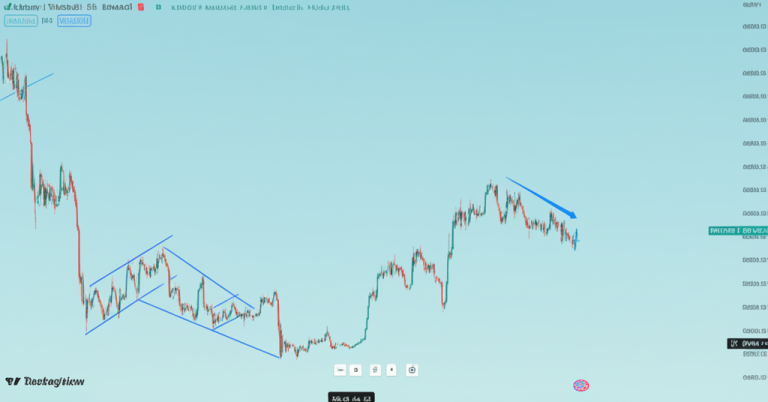The Unshakable Reign of Tether in the Stablecoin Ecosystem
Introduction: The Stablecoin Landscape and Tether’s Dominance
The stablecoin market, a crucial bridge between traditional finance and the volatile world of cryptocurrencies, is a hotbed of competition and innovation. Amidst a landscape of rising competitors and increasing regulatory scrutiny, Tether (USDT) continues to hold a dominant position. Recent data from blockchain analytics firm Nansen shows that as of April 25, USDT commands a 66% market share among dollar-pegged stablecoins, far outpacing rivals like USDC (28%) and Ethena’s USDe (2%). This report delves into the factors behind Tether’s enduring dominance, its financial strategies, and the challenges it faces in an increasingly competitive environment.
Market Dynamics: Why Tether Remains on Top
Liquidity and Network Effects
Tether’s dominance is largely due to its deep-rooted position as the most liquid stablecoin across both centralized and decentralized exchanges. With significantly more transactions than its closest competitor, USDT serves as the primary medium for trading pairs, arbitrage, and cross-border settlements. Its multi-chain compatibility—spanning Ethereum, Solana, TRON, and others—ensures that it is accessible to a diverse user base. This widespread adoption creates a network effect, where the more users and transactions Tether facilitates, the more valuable and indispensable it becomes.
Profitability Through Treasury Investments
Tether’s profitability model is a key factor in its sustained success. By minting tokens against U.S. dollar deposits and investing reserves in short-term Treasuries or other low-risk instruments, Tether generated nearly $14 billion in profits during 2024 alone. This self-reinforcing cycle allows Tether to reinvest earnings into compliance upgrades and product diversification while maintaining minimal operational costs compared to traditional banks. This financial strategy not only ensures stability but also fuels further growth and innovation.
Competitive Pressures: Can Rivals Close the Gap?
USDC’s Growth Trajectory vs. Market Realities
Circle’s USDC has made significant strides, particularly among institutional users, due to its stricter compliance standards. However, it still lags behind USDT in terms of adoption velocity. Despite faster growth rates for alternatives like PayPal USD or FDUSD, users prioritize stability over yield, a preference that favors established players like Tether. This market reality highlights the challenge for new entrants, as they must not only match Tether’s technological capabilities but also build trust and stability.
Emerging Players Face Structural Hurdles
Ethena Labs’ synthetic dollar protocol, for example, represents a innovative approach with its delta-neutral hedging strategy. However, it faces scalability risks inherent to crypto-collateralized models. Meanwhile, algorithmic stablecoins remain stigmatized following the collapse of TerraUSD, limiting investor confidence even for audited projects. These structural hurdles make it difficult for new players to gain a foothold in the market, further cementing Tether’s leadership position.
Beyond Dollars: Diversification into Gold-Backed Tokens
Tether Gold (XAUT), backed by physical bullion stored in Switzerland, represents another growth vector amid macroeconomic uncertainty. Holdings reached 7.7 tons ($770M market cap) by the end of Q1 as gold prices surged approximately 8% monthly alongside Bitcoin rallies (+14%). While niche compared to fiat-backed offerings, XAUT underscores how diversification strengthens brand loyalty during volatile cycles. This diversification strategy not only mitigates risks but also attracts a broader range of investors seeking stability in uncertain times.
Regulatory Risks & Reserve Transparency Concerns
Despite improvements since past controversies, including a settlement with the New York Attorney General over reserve misstatements, recent analyses still flag vulnerabilities. Approximately 18% of Tether’s reserves reportedly include riskier assets like corporate debt or secured loans, according to Federal Reserve research. Such exposures could amplify depegging risks if liquidity crunches occur, though no major incidents have materialized yet under current management policies emphasizing transparency through quarterly attestations. Balancing growth with heightened scrutiny is crucial to ensuring that stability is not sacrificed at the altar of expansionism—a lesson competitors must heed to survive long-term battles within the crypto’s most consequential vertical today.
Conclusion: A ‘Winner-Takes-Most’ Future Ahead
Nansen aptly frames this sector as one where network effects create insurmountable moats, where users want access to the least-likely-to-depeg options. This explains why challengers struggle despite technological edges. Technical innovations may gradually erode margins, but absent catastrophic failures, Tether appears poised to retain leadership through sheer scale, adaptability, and a relentless focus on liquidity above all else. The road ahead demands balancing growth with heightened scrutiny to ensure that stability is not compromised. This is a lesson that competitors must heed to survive the long-term battles within the crypto’s most consequential vertical today.
資料來源:
[2] startupnews.fyi
[3] www.theblock.co
[4] libertystreeteconomics.newyorkfed.org
[5] coingate.com
Powered By YOHO AI





